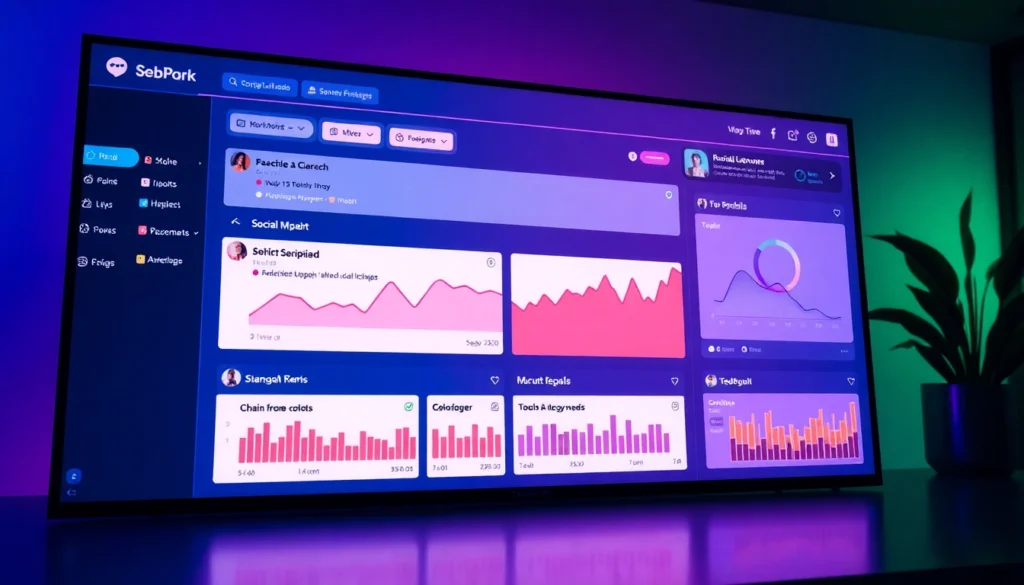Introduction to Technology
Definition and Overview
In today’s rapidly evolving landscape, the term technology encompasses a wide array of tools, systems, and methodologies designed to facilitate human activities and improve the quality of life. At its core, technology can be defined as the application of scientific knowledge for practical purposes, especially in industry. This definition, while broad, captures the essence of how technology transforms theoretical knowledge into concrete applications that satisfy specific needs.
The Evolution of Technology
The history of technology dates back to the dawn of human civilization, shaping the trajectory of societies worldwide. From the invention of simple tools in prehistoric times to the complex systems of modern computer networks, the evolution of technology is marked by significant milestones. Key developments such as the invention of the wheel, the printing press, and the internet illustrate the profound impact technology has on human progress. Each innovation has not only addressed practical challenges but has also influenced social structures, economic activities, and cultural practices.
Importance in Society
In contemporary society, technology plays a critical role across various sectors, including education, healthcare, and transportation. The integration of technology into daily life has led to improved communication, enhanced learning experiences, and more efficient medical practices. For instance, telemedicine has revolutionized patient care by providing remote consultations and enabling doctors to monitor patients’ health in real time. Understanding its importance helps us appreciate technology as a cornerstone of modern life, underscoring the need for responsible and innovative use.
Types of Technology
Information Technology
Information Technology (IT) encompasses a vast range of technologies designed to manage and process information. It includes hardware components, software applications, and networks that facilitate communication and data management. The rise of the internet has transformed IT, enabling global connectivity and data sharing. Key areas within IT include data analysis, cloud computing, cybersecurity, and software development, each critical for businesses seeking to maintain competitive advantages in a digital world.
Communication Technology
Communication technology refers to the various tools and platforms used to convey information. From traditional telegraphs and telephones to modern smartphones and social media, communication technology continues to evolve. Improved connectivity has transformed personal relationships, business interactions, and even political engagements. With the advent of instant messaging applications and video conferencing tools, societies can overcome geographical barriers, allowing for real-time interaction across vast distances.
Consumer Technology
This category encompasses devices and systems designed for everyday consumer use. Products such as smartphones, smart home devices, wearables, and laptops facilitate daily activities and enhance convenience. Consumer technology continuously evolves, often incorporating advanced features such as artificial intelligence and machine learning to provide personalized experiences. This rapid innovation drives consumer expectations, forcing companies to keep pace with emerging trends to remain relevant in the market.
The Impact of Technology on Daily Life
Enhancements in Communication
The integration of technology in communication has led to significant advancements in how we connect with one another. Social media platforms enable users to share experiences and ideas instantaneously. Video conferencing tools have become vital for remote work and maintaining relationships in a globalized world. Furthermore, language translation technologies enhance cross-cultural communication, erasing language barriers and fostering international collaboration.
Efficiency in Work and Productivity
In the workplace, technology has dramatically increased efficiency and productivity. Automation tools streamline repetitive tasks, allowing employees to focus on higher-value work. Project management software enables teams to collaborate seamlessly, track progress, and meet deadlines. Businesses leveraging technology can manage resources more effectively and respond agilely to market demands, resulting in increased profitability.
Challenges and Disruptions
Despite the many benefits, technology also presents challenges and disruptions. The rapid pace of technological advancement can lead to job displacement as automation takes over tasks previously performed by humans. Additionally, the dependence on technology raises concerns about security and privacy. Cybersecurity threats are an ever-present danger, with sensitive data at risk of exposure. Moreover, the digital divide highlights the inequality in access, with significant portions of the population lacking the resources to take advantage of technological advancements.
Future Trends in Technology
Emerging Technologies
The future of technology is characterized by the emergence of innovative trends such as artificial intelligence (AI), the Internet of Things (IoT), and blockchain. AI has already begun to transform industries by enabling machines to learn from data, automate processes, and enhance decision-making. IoT connects everyday devices to the internet, creating smart homes and cities that improve efficiency and convenience. Meanwhile, blockchain technology promises increased security and transparency in transactions, revolutionizing areas such as finance and supply chain management.
Potential Impacts on Employment
As these technologies evolve, they will have profound implications for the workforce. While new job opportunities will emerge in tech-driven fields, traditional roles may diminish, necessitating a workforce that is skilled in digital literacy and adaptive to change. Educational institutions play a crucial role in preparing future generations by integrating technology into curricula, emphasizing critical thinking, innovation, and lifelong learning to meet market demands.
Sustainability and Ethical Considerations
With technology’s rapid evolution comes the necessity for sustainable and ethical practices. As companies adopt technologies that optimize productivity and cost, they must also consider their environmental impact. Innovations like renewable energy technology and green tech solutions are crucial in addressing climate change. Furthermore, ethical considerations surrounding AI, data privacy, and surveillance require thoughtful dialogue and regulation to ensure technology serves for the greater good without infringing on individual rights.
Conclusion and Reflection
Lessons from Technology’s Development
The trajectory of technology interweaves with the fabric of society, revealing profound lessons about innovation, adaptation, and resilience. Historical trends show that periods of significant technological advancement often accompany societal shifts, whether in labor practices, economic structures, or cultural values. These iterations remind us that engagement with technology necessitates not just technical proficiency but also ethical considerations and societal awareness.
The Need for Responsible Usage
As we stand on the precipice of further technological advancements, embracing responsible usage becomes paramount. Individuals, corporations, and governments must collaborate to navigate the complexities brought forth by technology, ensuring that its benefits are equitably distributed while minimizing risks. Establishing frameworks for ethical use and fostering a culture of responsibility will be critical in steering technology towards positive outcomes.
Encouraging Innovation While Addressing Challenges
Innovation is the lifeblood of progress, but it must be pursued alongside an awareness of associated challenges. By promoting an environment conducive to creativity and experimentation, while simultaneously addressing issues such as inclusivity and sustainability, society can leverage technology’s full potential. Emphasizing collaboration between sectors and disciplines will help shape a brighter future where technology continues to enhance human capabilities while addressing the complexities of life in the modern world.








